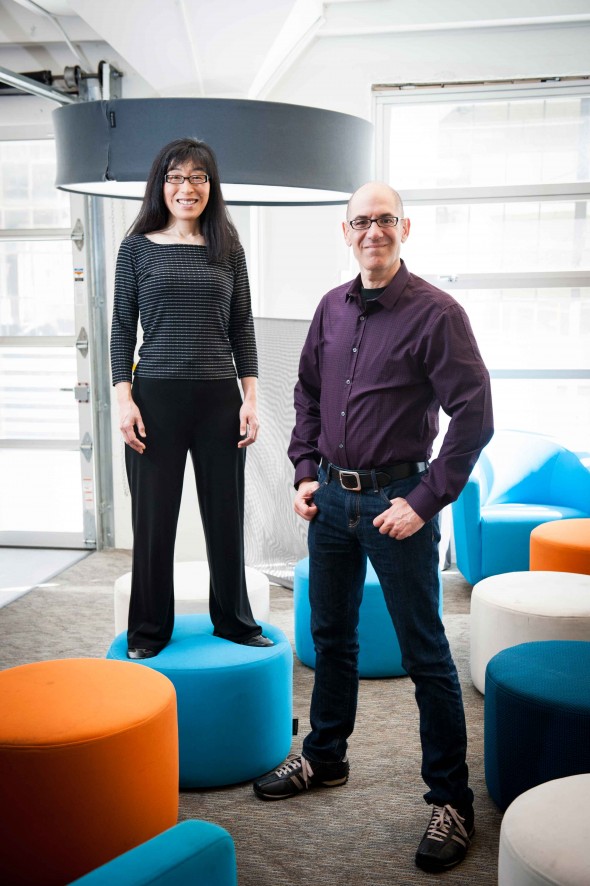
The story of Steve Hoffman and Naomi Kokubo reads like an inter- national spy thriller, full of unexpected twists and quick costume changes. Over the years, they have been highly successful game developers, entrepreneurs, coders, designers, investors, advisers, artists, and business partners. Along the way, they’ve cultivated their most successful roles yet: husband and wife.
The two met in London as college students. Steve soon started his career in Hollywood as a TV producer, then crossed the ocean to head game development for Sega in Tokyo. Naomi followed him from Tokyo to Los Angeles and back to Tokyo, build- ing for herself an interesting resume along the way that ranges from Morgan Stanley to movie distribution. Then, at the drop of, say, one of their many hats, the pair picked up and moved back to California in the mid-’90s in order to co-create Lava- Mind, a video game brand offering non-violent, intelligent video games—something that didn’t really exist two decades ago. Their slate of learning games, including Gazillionaire and Zapitalism, earned reviews such as, “sheer fun” and “oddly compelling” from the New York Times. Following this success, Hoffman and Kokubo continued to take on many other ventures such as founding Spiderdance, the first interactive television platform, as well as the San Francisco chapter of the Producers Guild of America.
That’s already an ambitious resume, but this tenacious couple has yet to slow down. Most recently, through their broad connections with creative entrepreneurs and venture capitalists, the pair has created Founders Space, a technology accelerator that could revolutionize the way startups are funded for many years to come.
How did Founders Space come about?
N.K. Initially, it was an online depository of information. We know what kind of problems startups face and what resources founders need. Founders need the same things and go through the same processes, so we thought why not share that information.
S.H. The startups then came to us with questions, and we con- nected them with other professionals. That community kept grow- ing, and we formally named it Founders Space. We brought in two partners to host gatherings where we invited Venture Capitalists and investors and startups. The events became more organized over time, and we now do an accelerator. We are about to open a 10,000 sq ft space in SoMa, with plans to open a much larger space in Menlo Park. My partners want to set up these accelerators all over the world. For me, it’s important that I get to work with great founders. Our mission is to this day to help founders, and I love ideas and technologies.

How does your accelerator differentiate itself?
S.H. The Y Combinator set the accelerator trend in motion a few years back with developing a format that everyone else adopt- ed, which is mainly a 12-week mentoring program culminating with a demo day for startups to pitch to investors. The Founders Space accelerator does not employ that concept of demo days. We invite investors in continually. Instead of pitching to investors right away, our startups get to meet these VC’s and angel investors in order to develop a relationship with them. We have a four- month program. At the end of the four months, if you are making progress and utilizing our program effectively, you can stick with our program and continue to attend our sessions and events.
Do you act as a muse for one another?
N.K. We inspire each other and make decisions together. We have different points of view, but we’re the same body.
S.H. We met in England while in college and got married a couple of years later. There isn’t a single important decision I make on my own. She comes to me on every major issue. We’re two halves of a whole.
What inspires your creative work?
S.H. When I’m engaging with somebody who is exceptionally bright and interesting and has a depth of knowledge I don’t possess,that usually drives me to new ideas.
N.K. Problem solving inspires my game designing work. For visual arts, I enjoy looking at beautiful things for ideas and inspiration… museums or a copy of SOMA Magazine I recently picked up off the bathroom floor. Steve also enjoys history and historical figures and all that they went through inspire me.

